Missed owl week on our social media last week? Not to worry, here’s all of the fun in one post.
We’ve had a spectacular month researching, observing and documenting what we consider to be the most impressive species of owl in North America, one that will be featured prominently in our Nature Labs program. Our time in field began with a search for a particular pair of great greys that we have observed several times over the last few years, but we never could have imagined where they would lead us.
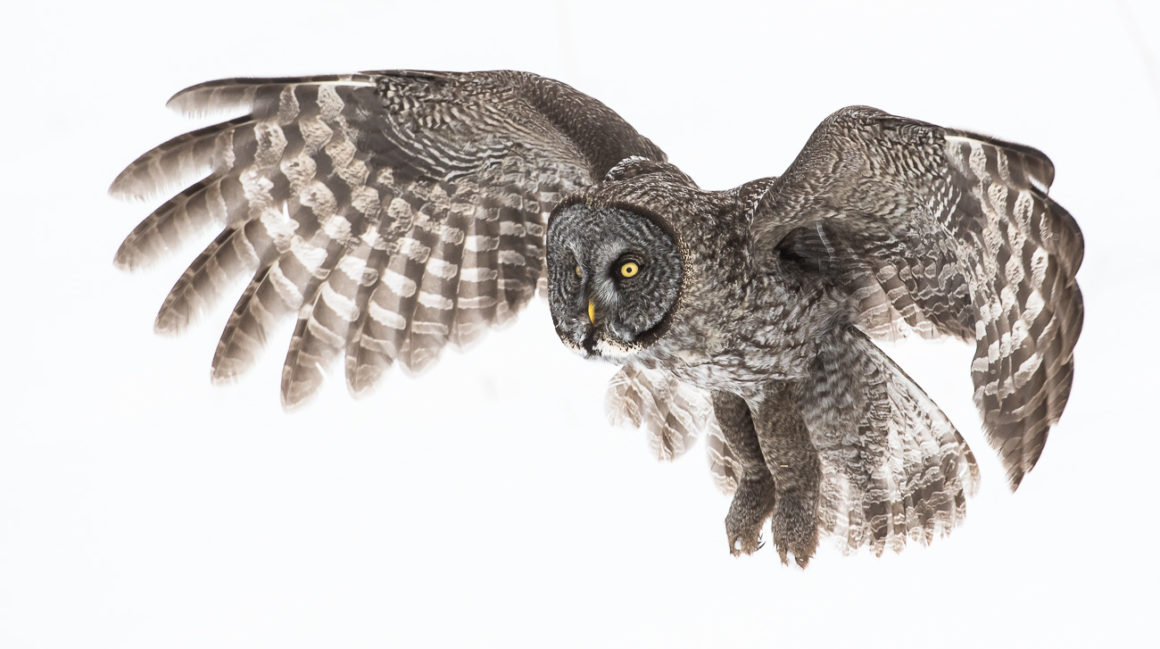
Their quest for food during the everlasting winter that has stretched into spring brought the owl pair into a one square kilometre parcel of land in the foothills of the Rocky Mountains. Betraying the commonly held belief that owls hate wind and bad weather, we found our pair hunting extensively in extreme winter conditions, including during windstorm gusts that reached 90 km/hour.
And our pair of great greys weren’t alone in loving this landscape. Over the next few weeks, no matter the elements, other great grey owls started showing up. First two pairs joined our owls in hunting the same meadow. Then six. Then eight. And on one amazing night, we counted 16 unique great grey owls visible within one kilometre of one another at the same time.
We have been scrambling to discover any research documenting this type of temporary population density and have struck out. Though we’re sure this isn’t a first – and believe it is the by-product of a record snowpack and a banner year for voles in that particular area – it does reinforce the value of observing one particular habitat or species over a long period of time.
When done respectfully and when fortified by research and learning, citizen science has the ability to document rarely seen behaviour, ask questions about widely held beliefs and identify new knowledge that can inform better strategies for safeguarding biodiversity.
Have you had the chance to observe and document unique great grey owl behaviour? Or have you had a particularly memorable encounter? We encourage you to share your observations and stories with us.
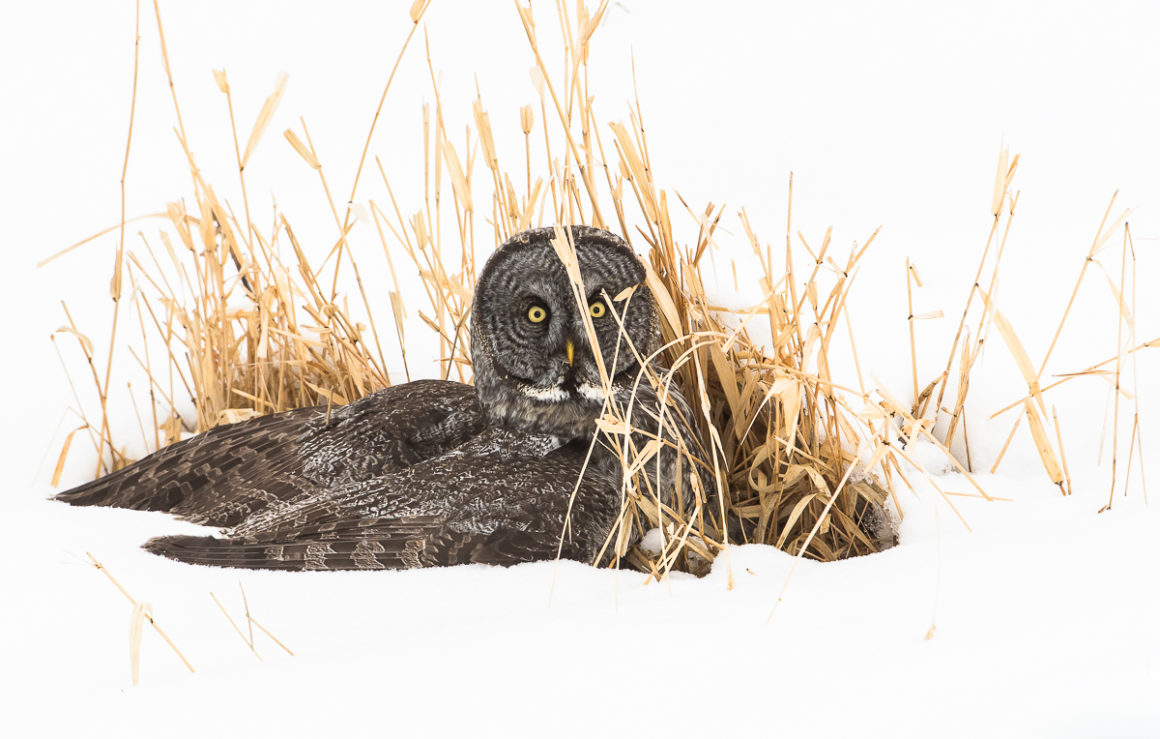
Determining their age
It can be extremely difficult to determine the age of a great grey owl, but not impossible. One method (albeit with mixed results) is to look closely at their feathers.
Great greys molt (shed) their flight feathers annually after their first year of life. As the owl ages, they tend to show more colour variations – from dark brown to lighter grey (the latter being the result of sun bleaching according to some studies). Juveniles, on the other hand, often have light tips at the end of their tail feathers and very little feather variation or barred colouring on their body.
Even with this technique, determining age is difficult and many studies into other methods have been inconclusive. In fact, it’s quite surprising how little research has been done on the Strix nebulosa – an owl that is the largest of its species by wing span in North America and one of the tallest, yet weighs only 2-3lbs.
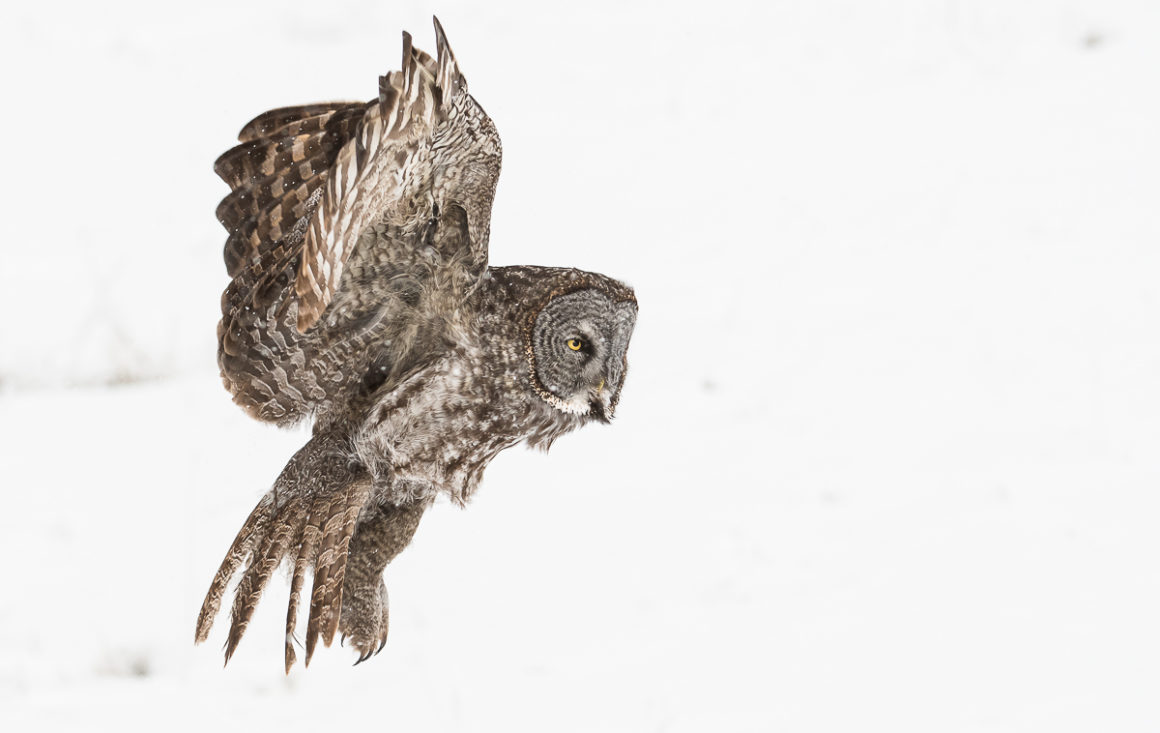
Determining sex
Determining the sex of the great grey owl is almost impossible. A general rule of thumb is to observe the size, especially in comparison to its mating partner during nesting season. Female great greys are, for the most part, larger than the males, though it’s not a hard and fast rule – age also factors into determining the owl’s heft.
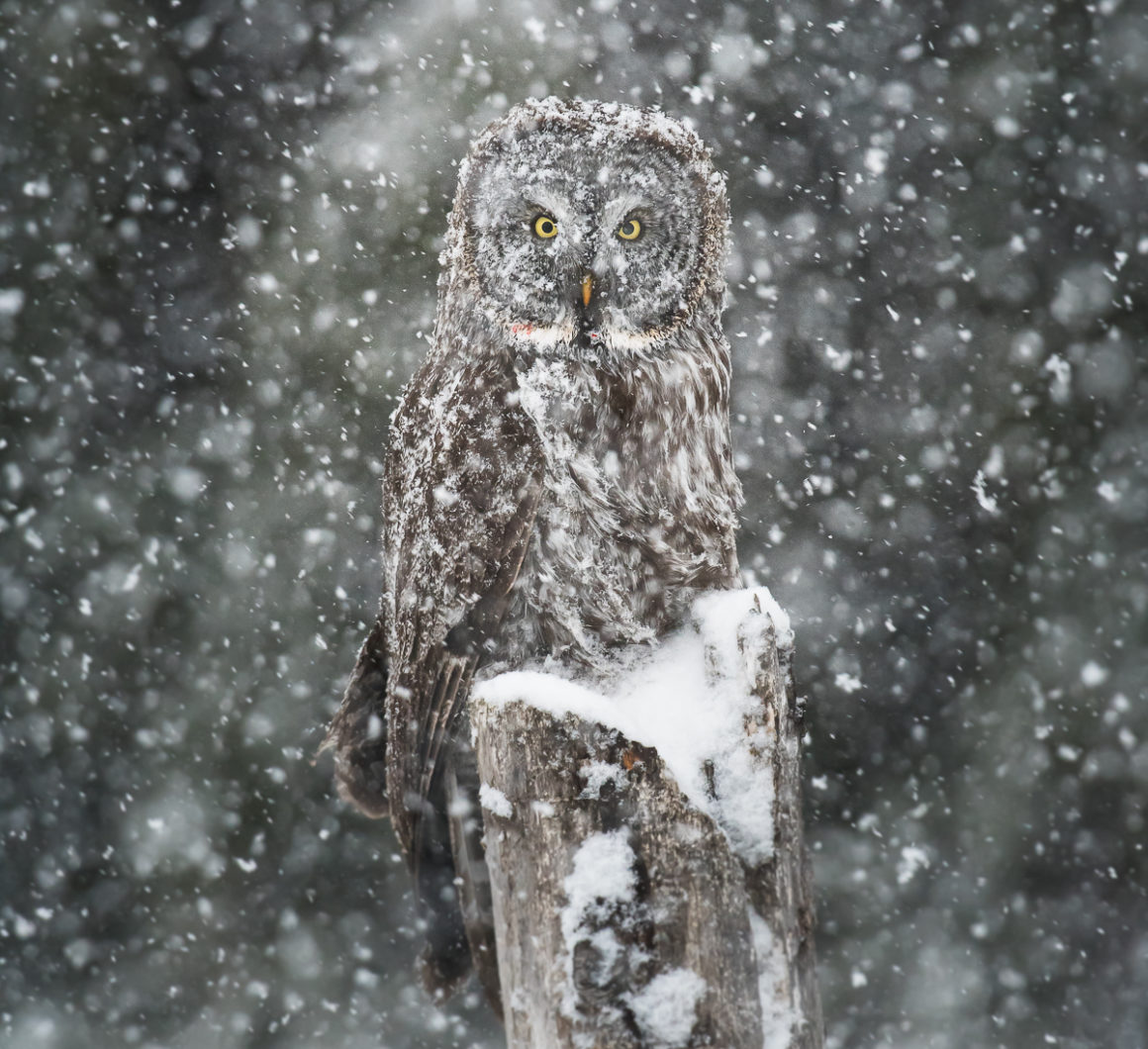
Efficient hunters
Great grey owls are excellent hunters. They feast primarily on voles and pocket gophers, but have also been known to eat squirrels, chipmunks, weasels and – rarely – rabbits and ducks.
They average 6-8 voles a day to maintain their diet and are excellent hunters, as we have observed. In fact, one great grey we documented killed and consumed eleven voles within a three-hour stretch. Sitting atop a perch, they watch and listen for their prey. When they sense movement, they will either hover above their target, waiting for the right moment, or dive directly for the kill.
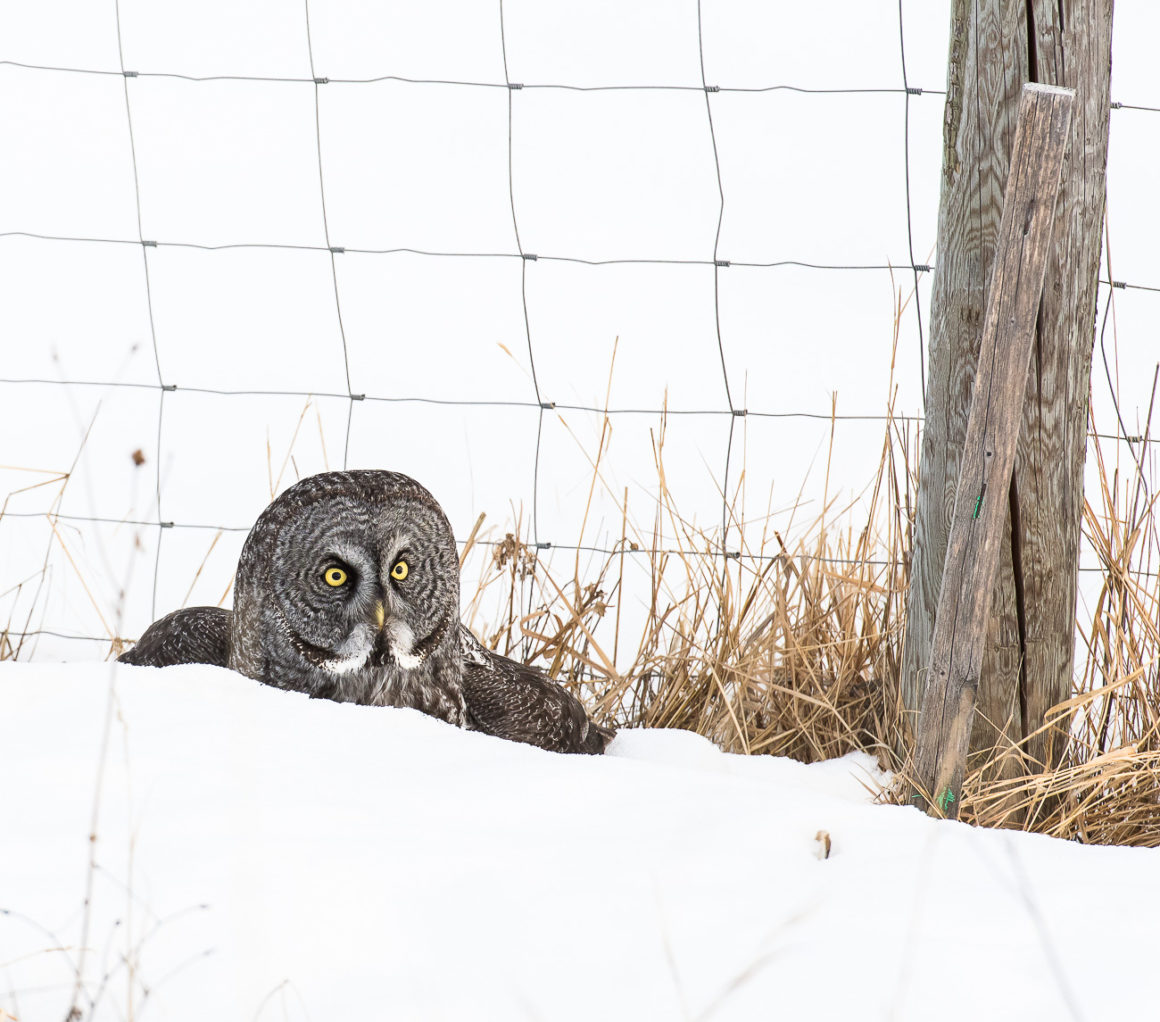
What’s truly incredible is their ability to break through deep, hard packed snow. Time and again we witnessed great greys use their talons to capture voles and gophers beneath harden snow and on one occasion that we measured, dug to a depth of nearly two feet.
It’s important to note that in observing owls hunting, we have never interfered. We do not bait owls, as it is a practice that can lead to its death (toxins from the baited prey or car strikes due to owls associating vehicles with food) and, obviously, it alters the true behaviour we seek to understand and share. Moreover, we have worked to understand the subtle signs that an owl provides to inform respectful distance to and time spent with a great grey. And this is imperative: some owls can be observed without forcing flight, interrupting rest or scaring them away from their chosen prey; others can’t. Recognizing the difference, in our opinions, is the most important factor in upholding ethical science and storytelling standards.
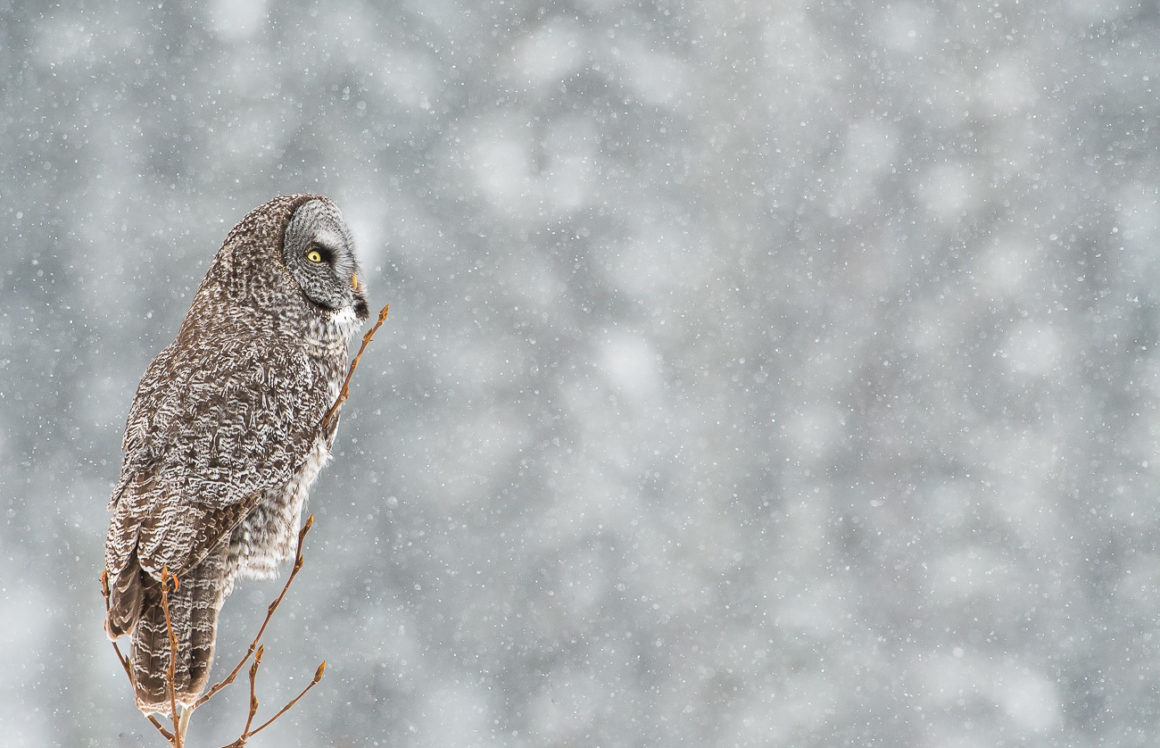
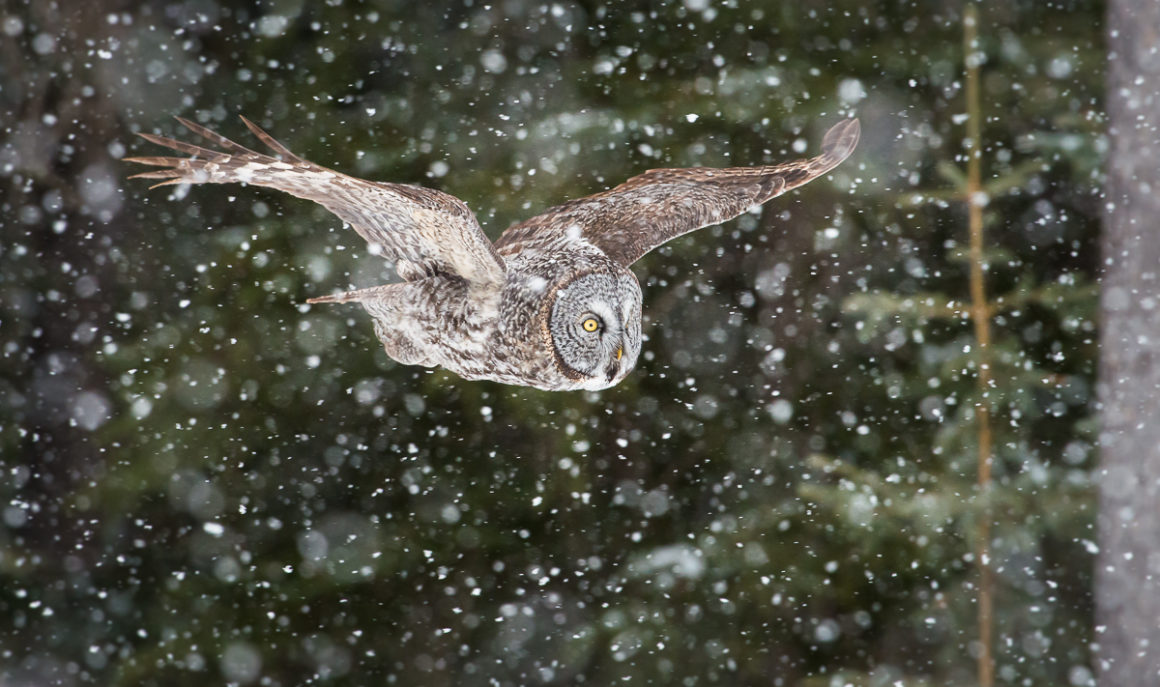
Great grey owl satellite?
Here’s a fun fact: Great grey owl ears are positioned a bit differently on each side of their head. They possess asymmetrical ears – the right ear opening is slightly lower than the left to enable a type of triangulation assistance that enables them to locate elusive prey beneath deep snow. Paired with their dished face, which acts as a satellite to capture the slightest sound, great grey owls have been using these skills to hunt since before the last ice age – techniques that took humans until the early 20th Century to discover and design for their own use.
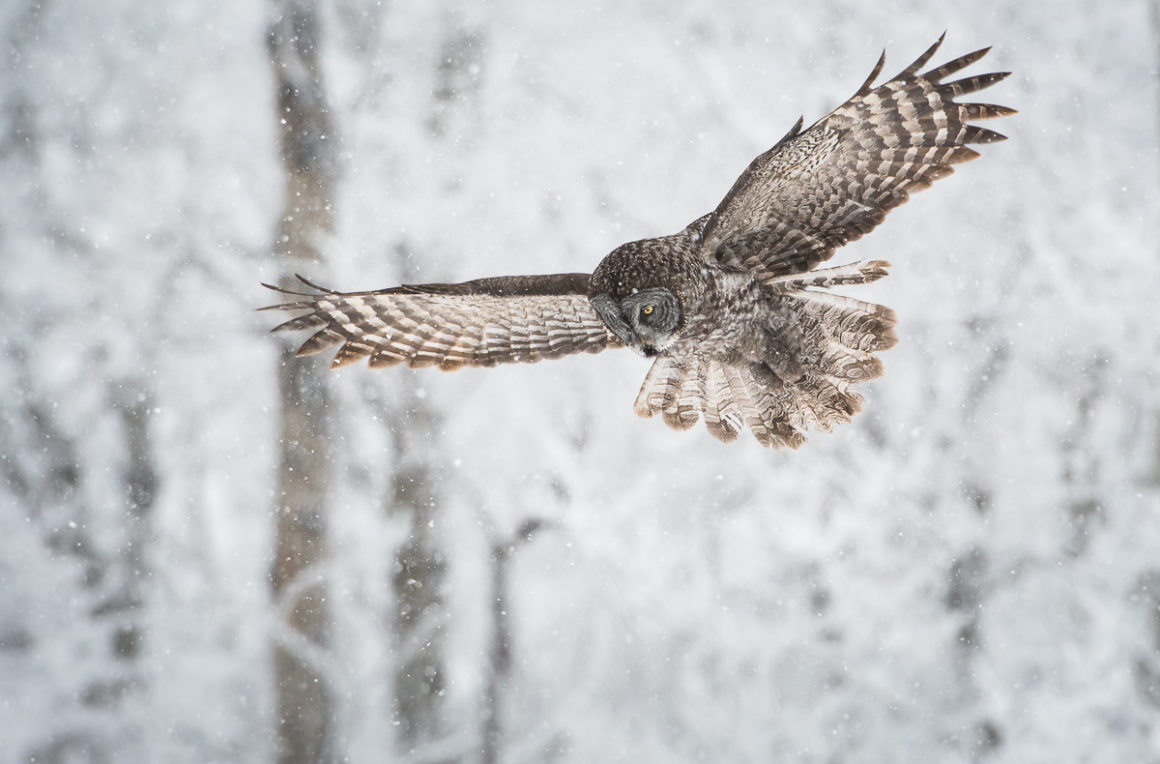
Who gives a hoot?
Have you ever heard a great grey owl hoot? It has a very distinctive call, a low whoooo-ooo-ooo-ooo that lasts for about eight seconds and can be repeated every 30 seconds. The call, which marks their territory, can be heard almost a kilometre away. We’ve even heard them growl, when another owl was threatening its space. There’s nothing like camping on a nice summer evening and listening to the great grey call out into the night.
Summer. That’s a novel concept. I think our great greys would agree.
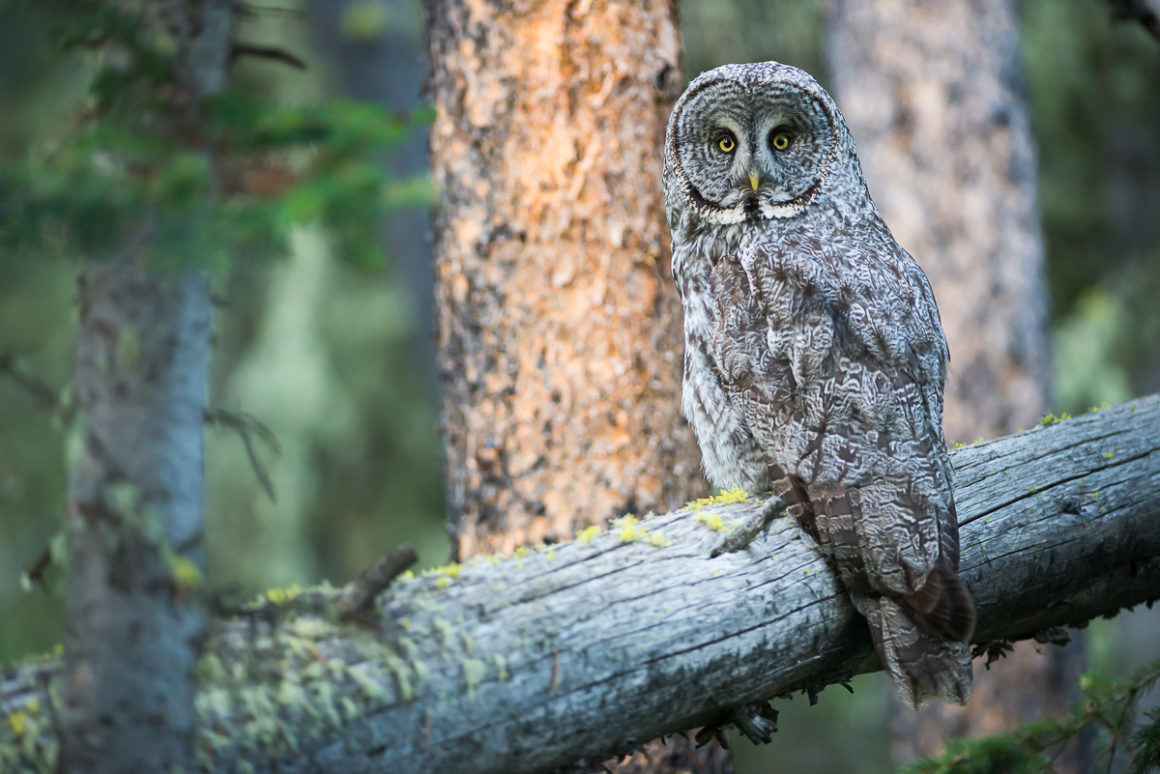
Great grey owl range
The great grey owl is synonymous with the boreal forest – ranging extensively across this landscape in North America from Alaska to Quebec. But it is also a mountain owl, ranging south to northern California and along the Rocky Mountains into Wyoming. Recently, great greys have even been discovered in Utah for the first time in 28 years.
These owls are so well camouflaged it is extremely difficult to spot them. They are most often located in dense pine or fir forests that have openings that provide access to fields, which are critical to hunting. Though they are known for utilizing human structures as perches, great greys are found more commonly in areas with little human disturbance. Why? Development – from logging to agriculture – often creates openings that are too large for a great grey to thrive.
This species of owl in particular requires large live – and dead – trees for nesting from March through June, as well as for roosting. When fledglings first start to leave the nest in early summer, dense forest canopy is imperative for the young owls – each tree provides multiple small perches for the owl to jump between as they learn to fly. And the forest also acts as cover from predators. Adult great grey owls are almost untouchable, but young can become prey for black bears, great horned owls and smaller carnivores, including marten – a member of the weasel family we’ve witnessed harass a great grey nest on multiple occasions.
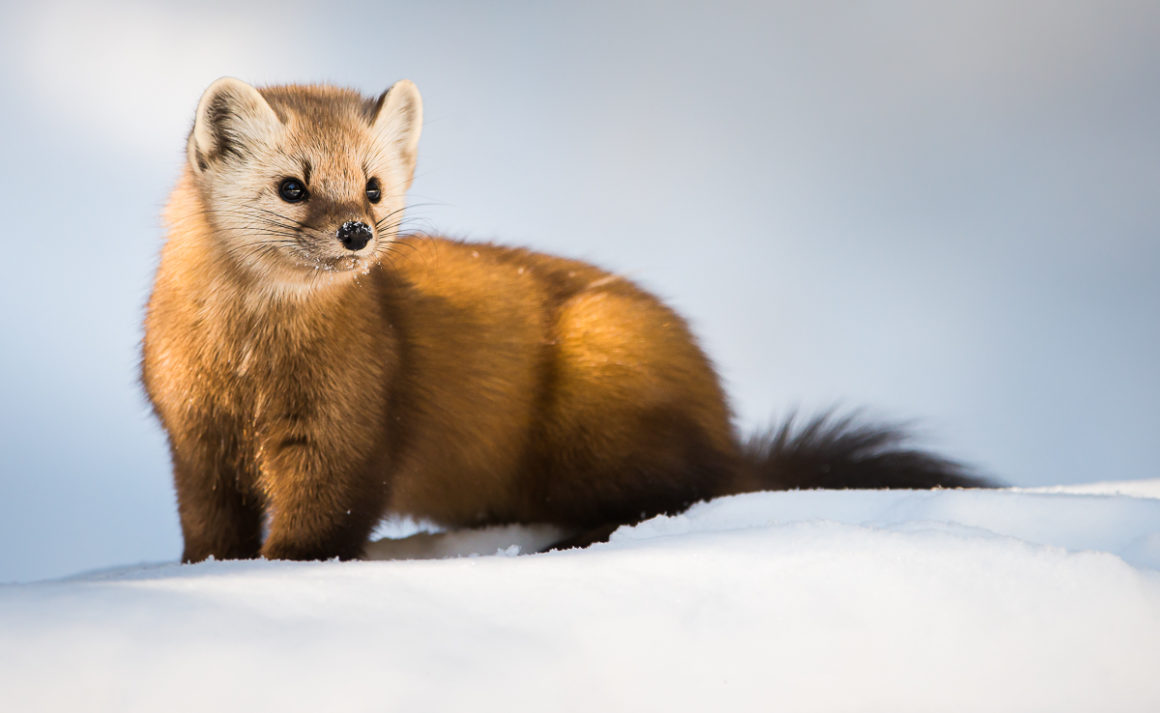
Protecting the owl
Though great greys aren’t endangered globally, they are recognized as a keystone species is sustaining biodiversity and managing rodent outbreaks. As a result, in our adopted home of Alberta, successive governments have worked to safeguard critical habitat and provided the species with full protection under the law. Even still, more education is needed to ensure owls aren’t killed accidently in the quest to poison rodents and we all need to work together to ensure that the species doesn’t become vulnerable with time. The West Nile Virus is a serious threat to great greys and it will become more common and more widely spread, scientists believe, with climate change.
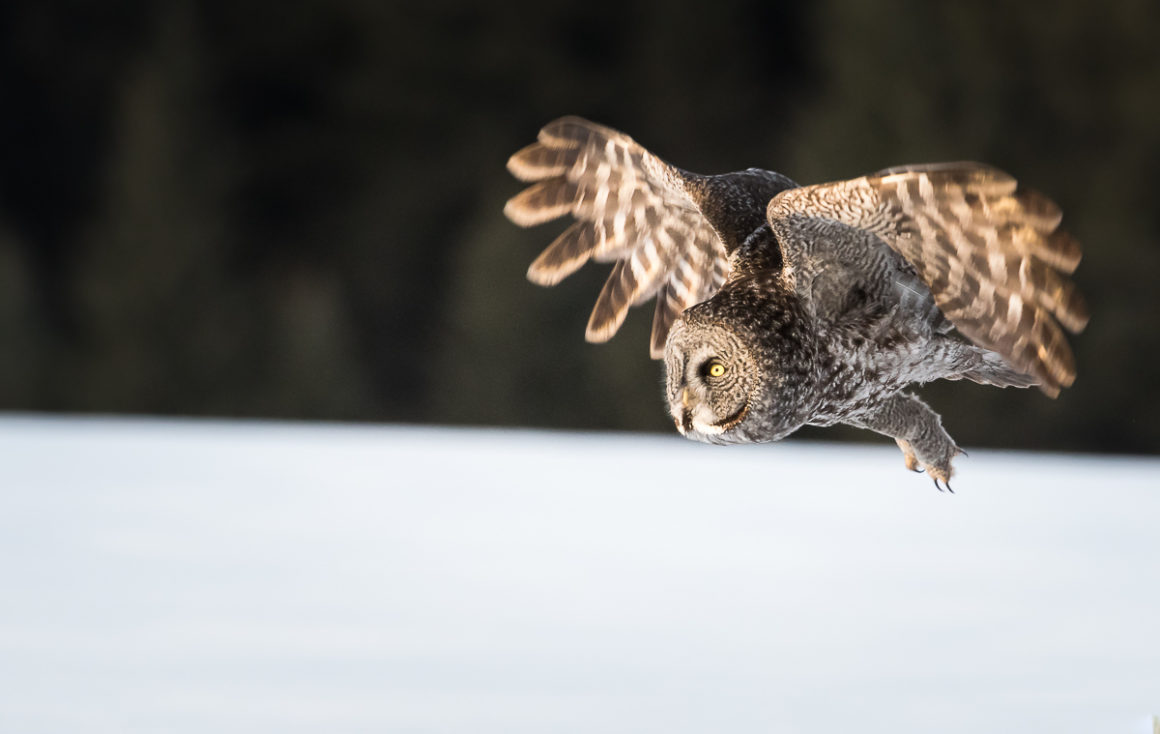
HELP US BUILD A CANADA WHERE MILLIONS SUPPORT ENVIRONMENTAL LITERACY IN THE CLASSROOM AND MILLIONS ACT WITH A FOUNDATION OF NATURE LITERACY.
Our signature project, Nature Labs, seeks to create a virtual high school textbook that uses nature as a real-world example of class lessons. We want to equip teachers with the resources they need to meet existing curriculum guidelines and provide students with a mosaic of stories and real-time connections that can connect their class to their lives.
Why?
We want create a new generation that acts with a foundation of nature literacy in all that they do.
Join us on Patreon!
Whether it’s $1 or $100, every dollar counts.
Federally registered non-profit #1063793-9






 Or join us on Patreon!
Or join us on Patreon!





